When it comes to selling gummies, packaging is an essential aspect of the marketing mix. The packaging of gummies can play a crucial role in consumer appeal, freshness, and safety. Therefore, it is essential to choose the right type of packaging for your gummies to stand out in the market and maintain their quality.
In this blog post, we will explore the most popular types of packaging for gummies at present. We will also discuss the advantages and disadvantages of each packaging type to help you make an informed decision for your gummy product.
1. What are the most popular types of packaging for gummies at present?
1.1 Plastic Bottles
When it comes to packaging gummies, there are many options available in the market. Plastic bottles are one of the most popular choices for gummy packaging due to their durability, convenience, and versatility. In this blog, we will discuss the different types of plastic bottles used for gummy packaging, their dimensions, material, cap, the material of the label affixed to it, and bottle capacity, as well as the advantages of using plastic bottles for gummy packaging.
1.1.1 Overview of different materials of Plastic Bottles.
There are many different types of plastic bottles available for gummy packaging, each with its own unique set of characteristics. Some of the most commonly used plastic bottles for gummy packaging include:
a. PET (Polyethylene Terephthalate) Bottles:
PET bottles are a popular choice for gummy packaging due to their clarity, durability, and lightweight. These bottles are commonly used for beverages but can also be used for gummy packaging. They come in different sizes, shapes, and capacities. PET bottles come with different caps, such as flip-top caps, twist-off caps, and child-resistant caps.
b. HDPE (High-Density Polyethylene) Bottles:
HDPE bottles are a popular choice for gummy packaging due to their durability and ability to resist chemicals, making them a safe option for gummy packaging. These bottles are available in different sizes, shapes, and capacities. HDPE bottles come with different types of caps such as snap-on, child-resistant, and tamper-evident.
c. PVC (Polyvinyl Chloride) Bottles:
PVC bottles are a popular choice for gummy packaging due to their flexibility and durability. These bottles are available in different sizes, shapes, and capacities. PVC bottles come with different types of caps such as snap-on, child-resistant, and tamper-evident.
d. LDPE (Low-Density Polyethylene) Bottles:
LDPE bottles are a popular choice for gummy packaging due to their flexibility and durability. These bottles are available in different sizes, shapes, and capacities. LDPE bottles come with different types of caps such as snap-on, child-resistant, and tamper-evident.
1.1.2 Overview of different Dimensions of Plastic Bottles.
In this section, we will provide an overview of different dimensions of plastic bottles commonly used for gummy packaging, and how these sizes relate to gummy’s capacity.
a.120cc or 4 oz Bottles: These bottles are commonly used for small quantities of gummies packaging. If the gummy bear is 2.5g, then 120cc or 4 oz Bottles can hold approximately 48-60 (estimated) bear gummies. If the gummy is 3g, then 120cc or 4 oz Bottles can hold approximately 30-40(estimated) bear gummies. They are also made of HDPE or PET plastic and have a screw-on cap.
b.150cc or 5 oz Bottles: These plastic bottles are similar in shape to the 120cc bottles but have a slightly larger capacity. If the gummy bear is 2.5g, then 150cc or 5 oz Bottles can hold approximately 60-75(estimated) bear gummies. If the gummy is 3g, then 150cc or 5 oz Bottles can hold approximately 40-50(estimated) bear gummies. They are commonly used for medium quantities of gummies or for multi-serving gummy packaging.
c. 200cc or 7 oz Bottles: These bottles are commonly used for larger quantities of gummies or for multi-serving gummy packaging. If the gummy bear is 2.5g, then 200cc or 7 oz Bottles can hold approximately 80-100(estimated) bear gummies. If the gummy is 3g, then 200cc or 7 oz Bottles can hold approximately 55-65(estimated) bear gummies.
d.300cc or 10 oz Bottles: These bottles are relatively rare and are typically used for bulk gummy packaging. If the gummy bear is 2.5g, then 300cc or 10 oz Bottles can hold approximately 120-150(estimated) bear gummies. If the gummy is 3g, then 300cc or 10 oz Bottles can hold approximately 90-100(estimated) bear gummies. They are made of HDPE or PET plastic and have a wider mouth opening, making it easier to fill and dispense the gummies.
It should be noted that these data are theoretical data. In actual bottling, in order to keep the gummies in the bottle from squeezing each other, a little space is generally left.
In addition to these standard sizes, plastic bottles can also come in custom sizes and shapes to meet specific packaging needs. Overall, the size and shape of the plastic bottle used for gummy packaging will depend on the quantity and intended use of the gummies.
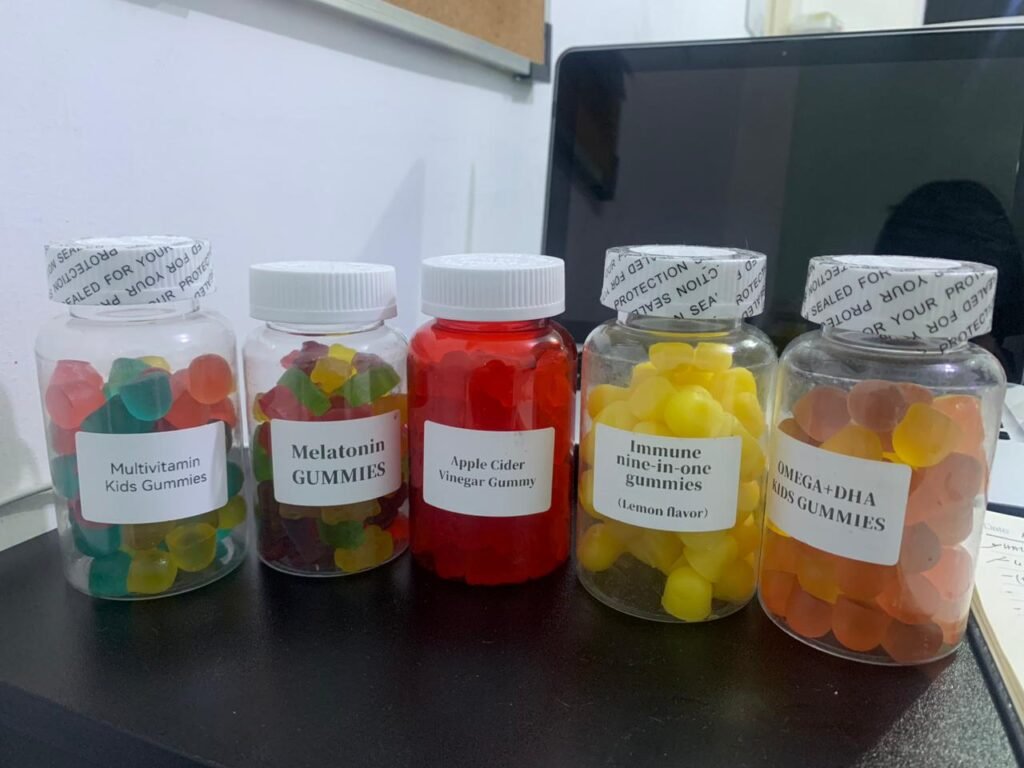

1.1.3 Overview of different caps of Plastic Bottles:
a. Screw Cap: A screw cap is one of the most common types of caps used in plastic bottle packaging. It is easy to use and provides a tight seal that helps keep the gummies fresh. Screw caps can be made of different materials such as plastic, metal, or a combination of both.
b. Flip Top Cap: A flip-top cap is a convenient option for consumers as it allows for easy opening and closing of the bottle. This type of cap is commonly used for smaller plastic bottles that are used for on-the-go snacking. Flip-top caps are typically made of plastic.
c. Child-Resistant Cap: Child-resistant caps are designed to prevent children from opening the bottle. They require a specific action to be performed before they can be opened. This type of cap is especially important when gummy candies are being marketed to children. Child-resistant caps can be made of plastic or a combination of plastic and metal.
d. Dropper Cap: A dropper cap is commonly used for liquid gummy supplements. It allows for precise dispensing of the liquid gummy, making it easier for consumers to measure the amount they need. Dropper caps are typically made of plastic and have a squeezable top.
e. Pump Cap: A pump cap is commonly used for larger plastic bottles that are used for gummy supplements. It allows for easy dispensing of the gummy supplement and can be locked when not in use to prevent spillage. Pump caps are typically made of plastic and can be removed for cleaning.
In addition, regarding the color of the bottle cap, it is generally the color that matches the bottle body. White and black bottle caps are used more often.
1.1.4 Overview of different materials of labels of Plastic Bottles:
a. Paper Labels: Paper labels are a common choice for plastic bottle packaging as they are cost-effective and provide a good surface for printing. They are available in various colors and finishes and can be easily customized to include product information and branding.


b. Film Labels: Film labels are commonly used for plastic bottle packaging as they provide a glossy finish and are more durable than paper labels. They can withstand exposure to moisture and can be printed with high-quality graphics and images.


c. Shrink Sleeve Labels: Shrink sleeve labels are a popular choice for plastic bottle packaging as they provide full-body coverage for the bottle. They are made of a heat-shrinkable plastic material that conforms to the shape of the bottle when heat is applied. Shrink sleeve labels can be printed with high-quality graphics and images and are ideal for branding purposes.
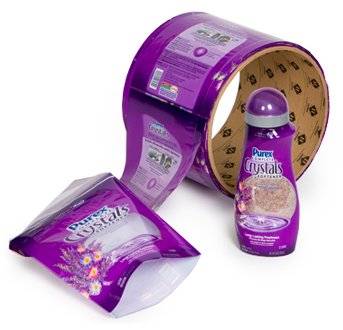

d. In-Mold Labels: In-mold labels are a type of label that is applied during the manufacturing process. They are molded into the plastic bottle, providing a permanent and durable label that is resistant to fading and peeling. In-mold labels can be printed with high-quality graphics and images and are ideal for branding purposes.
e. Direct Printing: Direct printing is a process where the label is printed directly onto the plastic bottle. It provides a clean and seamless look and is ideal for short runs or custom packaging. Direct printing can be done using various printing methods such as screen printing or digital printing.
Considering factors such as cost and cost performance, the first three labels are more common.
1.1.5 Advantages of Plastic Bottles Packaging
a. Convenience:
Plastic bottles are a convenient packaging option for gummies, as they are lightweight and easy to carry around. This makes them ideal for on-the-go consumption, making them a popular choice for consumers who are always on the move.
b. Durability:
Plastic bottles are durable, making them ideal for packaging gummies. They are resistant to breakage, making them a safe option for transportation and storage.
c. Versatility:
Plastic bottles come in different sizes, shapes, and capacities, making them a versatile packaging option for gummies. This makes it possible to package gummies in different forms, such as single-serve packs or family packs.
d. Cost-Effective:
Plastic bottles are a cost-effective packaging option for gummies, as they are affordable compared to other packaging options. This makes them ideal for small and medium-sized businesses that are looking for a cost-effective packaging solution.
e. Customization:
Plastic bottles can be easily customized with different types of labels, making it possible to create a unique and attractive packaging design. This can help to differentiate the product from competitors and increase brand recognition.
Conclusion
Plastic bottles are a popular packaging option for gummies due to their convenience, durability, versatility, cost-effectiveness, and customization options. PET, HDPE, PVC, and LDPE are some of the most commonly used types of plastic bottles for gummy packaging, each with its unique set of advantages.
1.2 Stand-Up Pouches
Gummy packaging has come a long way over the years, with various options available for manufacturers to choose from. One popular option for packaging gummies is the stand-up pouch. Stand-up pouches are widely used in the food industry for their convenience, portability, and branding opportunities. In this chapter, we will provide an overview of different types of stand-up pouches and their advantages.
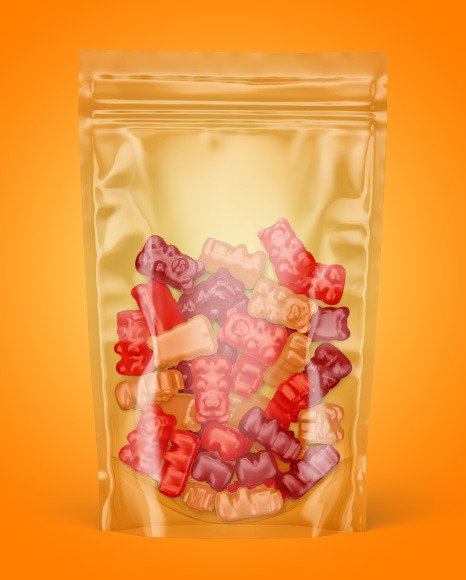

1.2.1 Overview of Different Types of Stand-Up Pouches
a. Resealable Pouches
Resealable stand-up pouches are designed with a ziplock or other resealable feature that allows the consumer to easily open and close the pouch multiple times. These pouches are ideal for gummies that require frequent access and are popular for on-the-go snacking. Resealable pouches are also great for consumers who want to preserve the freshness and quality of the gummies over an extended period.
b. Clear-Front Pouches
Clear-front stand-up pouches are designed with a transparent front panel that allows consumers to view the product inside. These pouches are ideal for gummies that have unique shapes, colors, and textures. Clear-front pouches are also great for consumers who want to see what they are buying before making a purchase decision.
c. Spouted Pouches
Spouted stand-up pouches are designed with a spout at the top that allows for easy pouring and dispensing of the gummies. These pouches are ideal for gummies that are consumed in larger quantities, such as family-size or party-size packages. Spouted pouches are also popular for gummies that are consumed by children or the elderly, as they are easy to handle and spill-proof.
1.2.2 Overview of Different Dimensions of Stand-up Pouches
Stand-up pouches are a popular form of flexible packaging used for a wide variety of products, including gummies. These pouches have a unique design that allows them to stand upright on their own, making them ideal for retail displays and easy storage. The capacity of stand-up pouches can vary depending on their size and shape, but they typically range from 1 oz to 5 lbs.
When it comes to gummy packaging, the capacity of stand-up pouches can be calculated based on the weight of the gummies. For example, if each gummy weighs 3g, we can determine the number of gummies that can fit into a pouch of a certain capacity.
Let's take a look at some common sizes of stand-up pouches and their capacity for 3g gummies:
- 1 oz Stand-Up Pouch: This size of stand-up pouch can hold approximately 10-12 gummies, depending on the shape and size of the gummies.
- 2 oz Stand-Up Pouch: A 2 oz stand-up pouch can hold approximately 20-24 gummies.
- 4 oz Stand-Up Pouch: A 4 oz stand-up pouch can hold approximately 40-48 gummies.
- 8 oz Stand-Up Pouch: An 8 oz stand-up pouch can hold approximately 80-96 gummies.
- 16 oz Stand-Up Pouch: A 16 oz stand-up pouch can hold approximately 160-192 gummies.
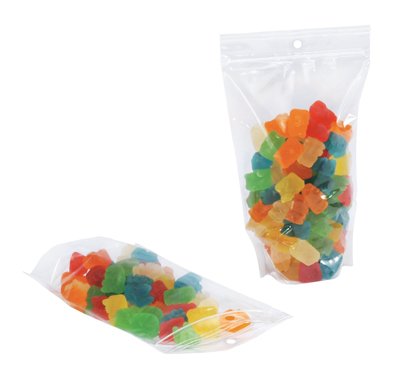

It's important to note that the exact number of gummies that can fit into a stand-up pouch may vary depending on the shape and size of the gummies, as well as the type of stand-up pouch being used. Some stand-up pouches have a wider base, which can allow for more gummies to fit, while others may have a narrower base that limits the number of gummies that can be packed.
In conclusion, stand-up pouches are a versatile and convenient packaging option for gummies, and their capacity can be easily calculated based on the weight of the gummies. When selecting a stand-up pouch for your gummies, it's important to consider the size and shape of your product to ensure a proper fit and maximum capacity.
1.2.3 Advantages of Stand-Up Pouches
a. Shelf Appeal
Stand-up pouches are a great way to catch the consumer's eye on store shelves. With their unique shape and design, they stand out from traditional flat packaging and can be easily customized with eye-catching graphics and branding. Stand-up pouches can also be printed with nutritional information, serving sizes, and other important details that consumers look for when making a purchase decision.
b. Branding
Stand-up pouches provide ample space for branding and messaging. The pouches can be printed with company logos, slogans, and other branding elements, which helps to build brand recognition and loyalty. Customized stand-up pouches are also popular for seasonal or limited edition gummies, as they can be designed to match the occasion or theme.
c. Eco-Friendliness
Stand-up pouches are a more eco-friendly option compared to traditional packaging options like plastic bottles or containers. They require less material to produce, which reduces waste and greenhouse gas emissions. Stand-up pouches can also be made with recyclable materials, which helps to reduce the amount of plastic waste in landfills and oceans.
In conclusion, stand-up pouches offer several advantages for packaging gummies. With their versatility, convenience, and branding opportunities, they have become a popular choice for both manufacturers and consumers. By choosing stand-up pouches for gummy packaging, manufacturers can enhance the appeal of their products and reduce their environmental footprint.
1.3 Blister Packs
When it comes to packaging gummies, blister packs have become a popular choice for many manufacturers. Blister packs are a form of packaging that consists of a pre-formed plastic blister and a backing card or foil. This packaging method offers several benefits, including enhanced product protection, convenience, and improved visual appeal. In this chapter, we will explore the different types of blister packs and discuss their advantages in detail.


1.3.1 Overview of different types of Blister Packs
Blister packs come in various forms, each designed to cater to different product requirements and consumer preferences. Here are some of the common types of blister packs used for gummy packaging:
a. Standard Blister Packs: Standard blister packs consist of a plastic blister that holds the gummies and a backing card that provides stability and product information. The blister is typically made of clear or colored plastic, allowing consumers to see the gummies inside.
b. Child-Resistant Blister Packs: Child-resistant blister packs are designed to prevent accidental ingestion by children. They feature special mechanisms, such as push-and-turn or squeeze-and-turn caps, that require a specific action to open. This type of blister pack is ideal for gummies that contain medications or supplements.
c. Slide Blister Packs: Slide blister packs have a unique design where the blister can be slid out of the packaging, allowing for easy access to the gummies. This type of blister pack is convenient for consumers as it eliminates the need for tearing or cutting open the packaging.
d. Custom Shaped Blister Packs: Custom shaped blister packs are designed to match the specific shape of the gummies. This type of packaging not only provides a secure fit but also enhances the visual appeal of the product.
Blister Packs are used in capsules and soft gels a little more in the supplement industry.


1.3.2 Advantages of Blister Packs
Blister packs offer several advantages for packaging gummies and other products. These include:
a. Tamper-Evident: Blister packs are designed to be tamper-evident, which means that consumers can easily tell if the package has been opened or altered. This is an important safety feature that helps to prevent contamination or product tampering.
b. Convenient: Blister packs are designed to be easy to use and convenient for consumers. They are portable and lightweight, making them ideal for travel or on-the-go use.
c. Protective: Blister packs offer excellent protection for gummies and other products. They are designed to be moisture-resistant, airtight, and UV-resistant, which helps to preserve the quality and freshness of the product inside.
In conclusion, blister packs are a versatile and convenient packaging option for gummy vitamins and supplements. They offer several advantages, including tamper-evidence, convenience, and protection. With a variety of blister pack types available, it is easy to find one that meets the specific needs of your product and customers.
1.4 Jars Packs
When it comes to packaging gummies, jars are one of the most popular options. They offer a variety of advantages, making them a popular choice among consumers and manufacturers alike. In this chapter, we'll take a closer look at jar packs for gummy packaging, including the different types available and their advantages.
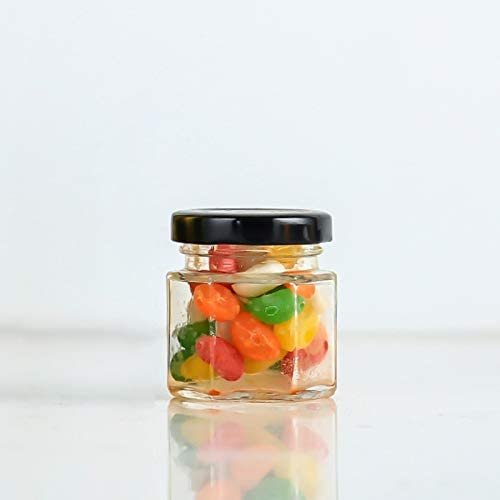

1.4.1 Overview of different types of Jars Packs
There are several different types of jars packs available for gummy packaging, including:
a. Clear Plastic Jars
Clear plastic jars are a popular choice for gummy packaging because they allow customers to see the product inside. These jars are often made of PET (polyethylene terephthalate) plastic, which is durable and lightweight. Clear plastic jars come in a variety of shapes and sizes, making them versatile for different gummy products.
b. Opaque Plastic Jars
Opaque plastic jars are similar to clear plastic jars, but they are not see-through. These jars are often made of HDPE (high-density polyethylene) plastic, which is more opaque than PET plastic. Opaque plastic jars are popular for gummy packaging because they protect the gummies from light, which can cause them to degrade over time.
c. Glass Jars
Glass jars are another popular option for gummy packaging. They offer a premium look and feel, which can help increase the perceived value of the product. Glass jars are also more eco-friendly than plastic jars because they are recyclable. However, they are heavier and more fragile than plastic jars, which can increase shipping costs and the risk of breakage.
1.4.2 The sizes of jars packs
The sizes of jars packs of gummy can vary depending on the manufacturer, but common sizes include 100cc, 120cc, 150cc, 200cc, 250cc, 300cc, and 500cc.
The number of 3g gummies that each jar can hold also depends on the size of the jar. Similar to Plastic Bottles, as a general rule, a 100cc jar can hold approximately 30-40 3g gummies, a 150cc jar can hold approximately 45-60 3g gummies, a 200cc jar can hold approximately 60-80 3g gummies, a 300cc jar can hold approximately 90-120 3g gummies, and a 500cc jar can hold approximately 150-200 3g gummies.
It's important to note that these numbers are estimates and can vary depending on the shape and size of the gummies, as well as the packing density used by the manufacturer.
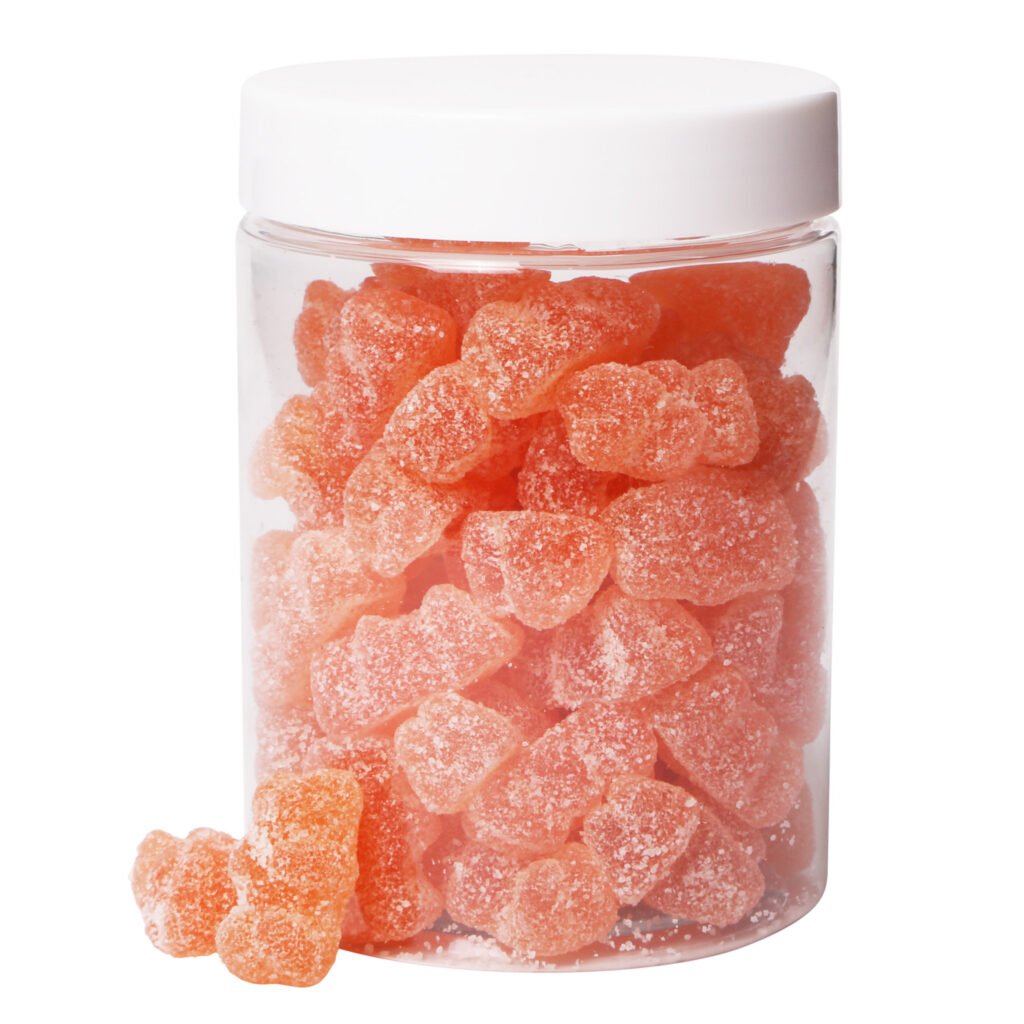

1.4.3 Advantages of Jars Packs
a. Protection from Moisture and Oxygen
One of the main advantages of jars packs for gummy packaging is that they provide excellent protection from moisture and oxygen. Moisture and oxygen can cause gummies to become stale or spoil, so it's important to protect them from these elements. Jars packs provide an airtight seal that helps keep gummies fresh for longer.
b. Reusability
Jars packs are often reusable, which can be an attractive feature for customers. After the gummies are consumed, the jar can be washed and reused for other purposes, such as storing small items or organizing a workspace. Reusability is also eco-friendly because it reduces waste and promotes sustainability.
c. Branding and Customization
Jars packs offer a lot of opportunities for branding and customization. The surface area of the jar provides ample space for a company logo, product name, or other branding elements. Jars can also be customized with different colors, shapes, and sizes to create a unique look and feel. Customization can help a product stand out on store shelves and increase brand recognition among consumers.
In conclusion, jars packs are a versatile and effective option for gummy packaging. They offer excellent protection from moisture and oxygen, can be reused, and provide ample opportunities for branding and customization. When considering gummy packaging options, be sure to consider jars packs and the advantages they offer.
2. Customized Packaging
In today's competitive market, it's important for brands to differentiate themselves from their competitors. One way to do that is through customized packaging. Customized packaging is becoming increasingly popular, as it offers brands the opportunity to create unique, eye-catching packaging that reflects their brand and stands out on store shelves.
Customized packaging is especially important in the gummy industry, where there are numerous brands all vying for the attention of consumers. In this chapter, we will discuss the growing trend of customized packaging for gummies, as well as some examples of customized packaging options available for brands.
2.1 Examples of Customized Packaging for Gummies


a. Personalized Labels
One of the most popular ways to customize gummy packaging is through personalized labels. This can include adding the customer's name, a personalized message, or even a photo. Personalized labels create a sense of exclusivity and make the product feel more special to the consumer.
b. Unique Shapes
Another way to customize gummy packaging is by creating unique shapes. This can include creating gummies in the shape of the brand's logo or using a custom mold to create a unique shape that reflects the brand's personality. Unique shapes help the product stand out on store shelves and make it more memorable to consumers.
c. Premium Materials
Using premium materials for packaging is another way to create a customized and luxurious feel. This can include using high-quality paper for labels or using glass jars instead of plastic. Premium materials make the product feel more high-end and exclusive, which can be appealing to consumers who are looking for a premium product.
2.2 Advantages of Customized Packaging
a. Branding
Customized packaging allows brands to create packaging that is unique to their brand, helping to differentiate themselves from their competitors. By creating packaging that is consistent with their brand identity, they can create a strong brand image and build brand recognition.
b. Shelf Appeal
Customized packaging is designed to stand out on store shelves, making it more likely that consumers will notice the product and pick it up. Eye-catching packaging can attract the attention of consumers and encourage them to try the product.
c. Eco-friendliness
Customized packaging can also be eco-friendly. By using sustainable materials and reducing waste, brands can appeal to consumers who are looking for environmentally friendly products. Eco-friendly packaging can also help to reduce the carbon footprint of the brand and contribute to a more sustainable future.
Customized packaging is becoming increasingly popular in the gummy industry, as brands look for ways to differentiate themselves from their competitors. Personalized labels, unique shapes, and premium materials are just a few examples of customized packaging options available for brands. Customized packaging offers numerous advantages, including branding, shelf appeal, and eco-friendliness. By creating packaging that is unique to their brand, gummy brands can stand out in a crowded market and create a lasting impression on consumers.
3. Future Trends in Gummy Packaging
The packaging industry is constantly evolving, driven by advancements in technology, changing consumer preferences, and the need for sustainability. In the gummy industry, packaging plays a crucial role in attracting consumers, preserving product freshness, and delivering a delightful experience. In this chapter, we will explore the future trends in gummy packaging and discuss the potential challenges and opportunities that gummy manufacturers may face in the changing packaging landscape.
3.1 Challenges in the Changing Packaging Landscape
a. Balancing Sustainability and Product Protection
While the demand for sustainable packaging is increasing, gummy manufacturers must also ensure that the packaging adequately protects the product. Finding the right balance between sustainability and product protection can be a challenge, as some sustainable materials may not offer the same level of barrier properties as traditional packaging materials. Gummy manufacturers will need to invest in research and development to discover innovative solutions that meet both sustainability goals and product preservation requirements.
b. Meeting Regulatory Requirements
As the packaging industry evolves, regulatory requirements regarding packaging materials, labeling, and safety may also change. Gummy manufacturers must stay informed about any new regulations and ensure their packaging complies with the necessary standards. This may involve additional testing, certifications, or adjustments to packaging designs and materials.
c. Consumer Engagement and Personalization
With the rise of e-commerce and direct-to-consumer brands, gummy manufacturers have the opportunity to engage with consumers on a more personalized level through packaging. Interactive packaging elements, personalized messages or offers, and QR codes for loyalty programs or digital content are just a few examples of how gummy manufacturers can connect with consumers and build brand loyalty.
However, the challenge lies in striking the right balance between personalization and maintaining cost-efficiency, as customization can often lead to increased production and packaging costs. Gummy manufacturers will need to explore scalable solutions that allow for personalization while still ensuring profitability.
d. Supply Chain Efficiency
As packaging options expand and gummy manufacturers adopt new technologies, it's important to consider the impact on the overall supply chain. New packaging materials or formats may require adjustments in production processes, logistics, and storage. Gummy manufacturers must evaluate the efficiency of their supply chain to ensure seamless integration of the new packaging solutions. This includes optimizing production lines to accommodate different packaging formats, establishing partnerships with reliable packaging suppliers, and implementing effective inventory management systems.


3.2 Opportunities in the Changing Packaging Landscape
a. Increased Use of Smart Packaging
Smart packaging involves the integration of technology into packaging materials to enhance product safety, provide real-time information, and improve consumer engagement. In the future, we can expect to see gummy packaging with smart features such as temperature sensors to monitor product freshness, QR codes or NFC tags for interactive product information, and even intelligent packaging that can detect tampering or contamination.
By incorporating smart packaging, gummy manufacturers can enhance the overall consumer experience, provide valuable product information, and ensure the integrity and quality of their products.
b. Digital Printing
Digital printing technology has been revolutionizing the packaging industry, allowing for more intricate designs, customization, and shorter print runs. In the future, gummy manufacturers may leverage digital printing to create eye-catching and vibrant packaging designs that stand out on store shelves. This technology enables greater flexibility in packaging design, allowing brands to experiment with different graphics, colors, and even personalized packaging options.
Digital printing also offers the advantage of faster turnaround times and reduced costs compared to traditional printing methods, making it a cost-effective solution for gummy manufacturers.
c. Recyclable and Sustainable Materials
Sustainability is a growing concern among consumers, and gummy manufacturers are recognizing the need to adopt more environmentally friendly packaging solutions. In the future, we can expect to see an increased use of recyclable and sustainable materials for gummy packaging, such as biodegradable films, compostable pouches, and recycled plastics.
By embracing sustainable packaging options, gummy manufacturers can reduce their environmental footprint, meet consumer expectations, and contribute to a greener future.
d. Convenience
Consumers are always looking for more convenient packaging options, such as single-serve pouches or on-the-go packaging. Gummy manufacturers can capitalize on this trend by offering innovative and convenient packaging options.
In conclusion, the future of gummy packaging is full of challenges and opportunities. Gummy manufacturers must stay ahead of the curve by investing in research and development, prioritizing sustainability, and staying up-to-date with changing regulations. By embracing new packaging technologies and meeting the evolving needs of consumers, gummy manufacturers can continue to thrive in a crowded and competitive market.
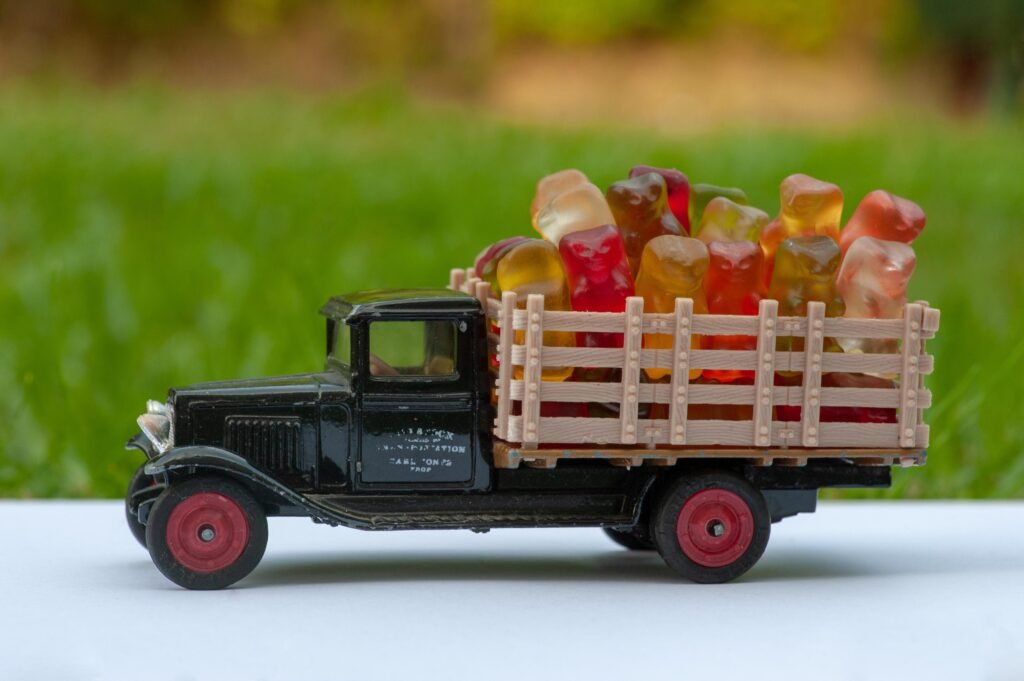

4. Choosing the Right Packaging
In today's competitive market, choosing the right packaging for gummies is more important than ever. Packaging plays a crucial role in attracting consumers, ensuring product freshness, and meeting sustainability goals. In this blog, we have explored various packaging options, discussed future trends, and highlighted the challenges and opportunities for gummy manufacturers. Now, let's conclude by emphasizing the importance of making informed packaging choices.
4.1 Recap of the Most Popular Types of Gummy Packaging
Throughout this blog, we have discussed several popular types of packaging for gummies, including plastic bottles, stand-up pouches, blister packs, and jars. Each type has its unique advantages and caters to different consumer preferences. Plastic bottles provide durability and flexibility, stand-up pouches offer convenience and branding opportunities, blister packs ensure product integrity, and jars provide a premium look and feel. Gummy manufacturers should consider the specific needs of their target market and product characteristics when selecting the most suitable packaging option.
4.2 Key Considerations for Gummy Manufacturers When Choosing Packaging
a. Product Protection: The packaging should protect gummies from moisture, light, and oxygen to maintain their quality and freshness. Proper seals, barrier properties, and light-blocking features should be considered.
b. Shelf Appeal: Eye-catching packaging design, attractive colors, and clear product information are essential for capturing consumer attention on crowded store shelves. Stand-up pouches with vibrant graphics, unique shapes, or personalized labels can enhance shelf appeal.
c. Convenience: Consumers value convenience, so packaging that offers easy opening, portion control, and resealability is highly desirable. Stand-up pouches with resealable zippers or blister packs with individual compartments provide convenience and help prolong product freshness.
d. Sustainability: With increasing environmental awareness, sustainable packaging options are gaining popularity. Gummy manufacturers should consider using recyclable materials, biodegradable options, or incorporating eco-friendly practices into their packaging choices.
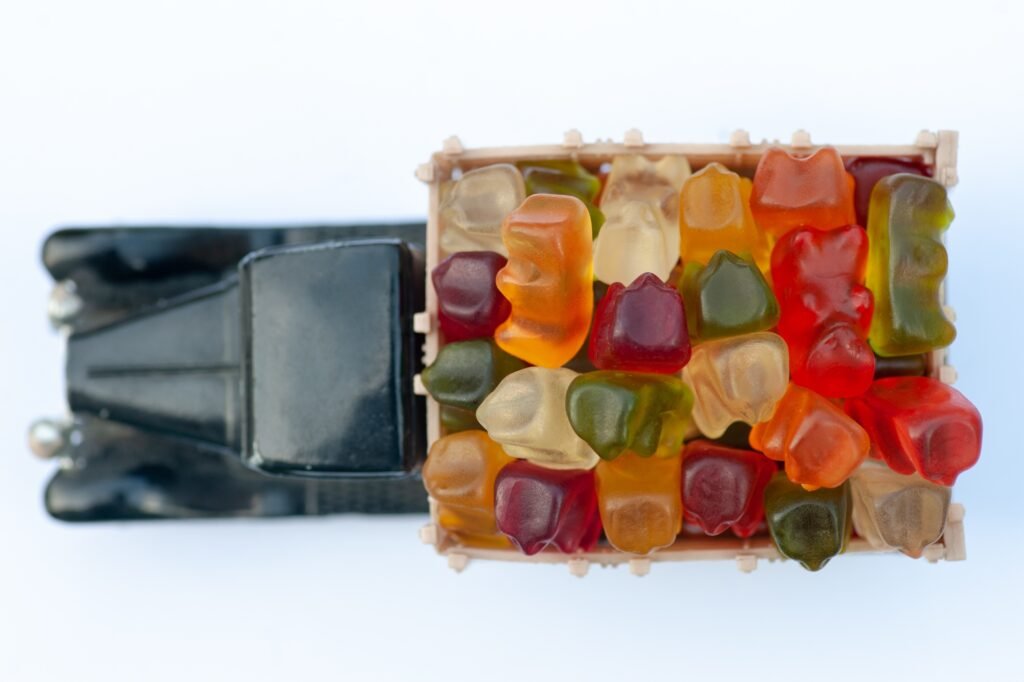

4.3 Importance of Staying Up-to-Date with Packaging Trends
Staying informed about the latest packaging trends is crucial for gummy manufacturers to meet consumer demands and remain competitive. Consumer preferences and market dynamics are constantly evolving, so it's essential to conduct market research, attend industry events, and collaborate with packaging suppliers. By staying up-to-date with emerging trends, gummy manufacturers can anticipate consumer needs, introduce innovative packaging solutions, and differentiate themselves in the market.
In conclusion, choosing the right packaging for gummies is a critical decision that can significantly impact a product's success. The packaging serves as a visual representation of the brand, protects the product's quality, and influences consumer purchasing decisions. Gummy manufacturers should consider factors such as product protection, shelf appeal, convenience, and sustainability when selecting packaging options. By staying informed about packaging trends and understanding consumer preferences, gummy manufacturers can meet market demands, enhance brand image, and ultimately achieve success in the competitive gummy industry.

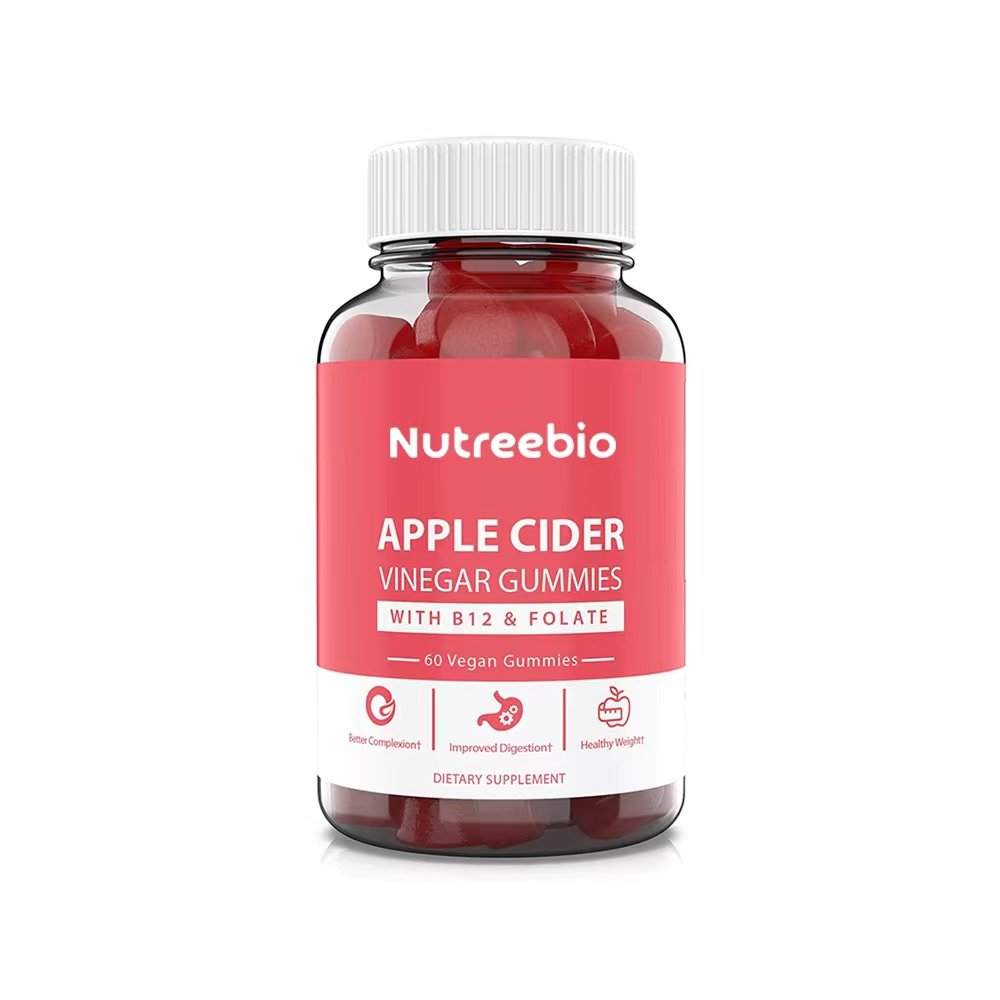


One Response